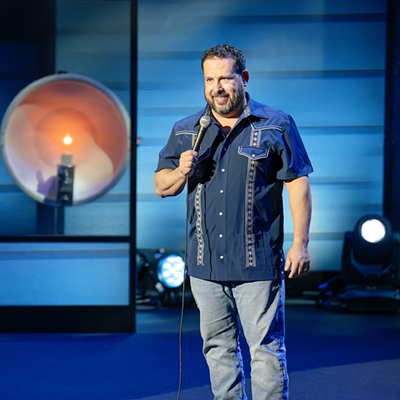In certain pockets--including the Cerbat Mountains outside Kingman, Ariz.--you'll find a glimmer of hope that the spirit of the West lives on. It's where hooves pound the dusty earth, and manes fly in the wind--where wild mustangs still run free.
At the end of the 19th century, 2 million wild horses roamed the West. Today, there are approximately 25,000 horses on the range. An even greater number--about 30,000--exist in government holding facilities.
Deanne Stillman expertly documents what happened to the horses in Mustang: The Saga of the Wild Horse in the American West. She spent 10 years writing the book.
Stillman credits horses for saving her family's life when she was a child. Her divorced mother got a job at the local racetrack and became one of the first women in the country to ride professionally. Stillman always remembered what horses gave her family and country.
"Wild horses were used to blaze our trails and fight our wars. ... Their service to this country goes very deep. We wouldn't be here without them," she says.
Stillman's book provides a detailed history of the horse and our treatment of the animal--from its evolution on the North American continent to its scant existence today. She discusses its use in wars and entertainment, its removal from the range in the early 20th century and its treatment during government-led roundups. There are a lot of facts here, but Stillman's conversational tone makes it an interesting and informative read.
She writes about Paul Revere's horse: Immortalized in the Longfellow poem about Paul Revere's midnight ride, this was the fearless steed who "kindled the land into flame" in April of 1775. The poem tells us little else about the gallant animal, but we know from the record that she was a mare named Brown Beauty, and her forebears included Spanish horses that had disembarked on the Carolina banks in the early years of the conquest. When Paul Revere's ride was over, she was seized by a British soldier, who mounted her and galloped away. She collapsed in mid-run and died later that night--spent, after launching the war for independence.
Sad endings continued into the early 20th century, especially in 1925, when 400,000 mustangs were removed from Montana.
"The horse was considered a cash crop. There were mass roundups. Hundreds of thousands were taken from the range and sold to other countries for (use in) wars. ... There was an incredible demand in the pet-food industry. ... We betrayed the horse we rode in on," says Stillman.
Stories of betrayal are abundant: 32 mustangs gunned down by ranchers in Idaho in 1971; 500-plus mustangs shot in eastern Nevada in 1989; 34 wild horses shot outside Reno, Nev., in 1998; more than 130 mustangs dead in Palomino Valley, Nev. after a roundup in 2007.
Stillman attributes the removal and killing of horses to greed and hatred.
"The horse is a great silent witness," she says. "They have seen it all. They have served on the front lines from day one. They've seen man at our best and worst. I think there is some sort of deep hatred of the wild horse, because he knows all of our secrets. ... He knows our true story, and that's why this country has turned on the horses."
For all of the enemies the horse has had, there are allies in the history books. Velma Johnston, known as Wild Horse Annie, fought for 20 years to stop wild-horse roundups in the West. The 1959 law called the Wild Horse Annie Act declared it illegal to "hunt mustangs and burros on all public lands with airplanes or motorized vehicles."
In 1971, Richard Nixon signed the Wild Free Roaming Horse and Burro Act into law, making it illegal to capture, brand, harass or kill wild horses.
Stillman calls for "a temporary moratorium on wild-horse roundups until scientific studies are brought up to date." She adds that the exact number of wild horses on the range is disputed.
Mustang ends with a glimmer of hope, but a questionable future for the horse. Stillman lists places--including those in Arizona, Nevada, Colorado, Idaho, Oregon and California--where "mustangs still roam, unfettered, in pretty herds ... galloping, walking, grazing, trying to make more of their own ... but for how much longer, we cannot say."
Deanne Stillman discusses her book Mustang: The Saga of the Wild Horse in the American West at 7 p.m., Friday, June 6, at Antigone Books, 411 N. Fourth Ave. A question-and-answer period follows. Call 792-3715, or visit Antigone Books for information.







